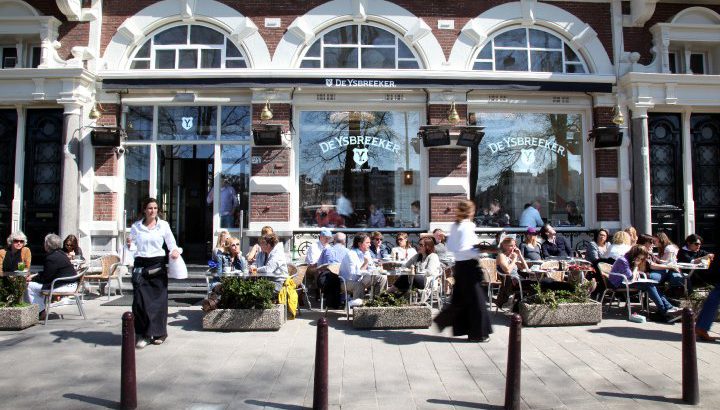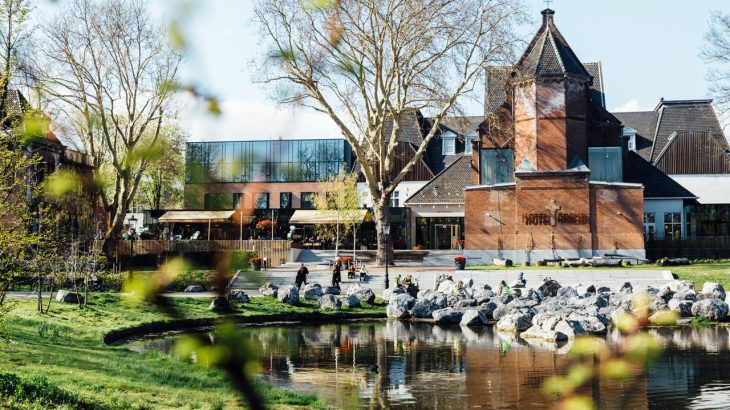Watergraafsmeer

A real working-class neighborhood for young and old
Amsterdam East is the part of Amsterdam located east of the Singelgracht. The western boundary is the Amstel river. The southern border is the Ringvaart around the Watergraafsmeer area. The construction of the eastern city extensions started in the last quarter of the nineteenth century, with the construction of the Oosterparkbuurt and the Dapperbuurt. After the nineteenth century, construction of the Indische Buurt also started.
Who lives in Watergraafsmeer?
De Watergraafsmeer is known as an attractive residential area for families. With spacious homes, green parks and good schools, it is a popular choice for families with children.
East, and in particular the neighborhoods around the Oosterpark, the Indische Buurt and the Amstel station, attract many young professionals. The neighborhood has a lively atmosphere and offers good amenities, such as trendy cafes, restaurants and cultural events.
Due to the proximity of various educational institutions, such as the University of Amsterdam (UvA) and the Amsterdam University of Applied Sciences (HvA), many students also live in East. They often find it convenient to live close to their school and enjoy the lively and diverse atmosphere of the neighborhood.
Amsterdam is a popular destination for expats because of its international companies and cosmopolitan atmosphere. Some of them choose to live in Oost because of its good public transport connections and proximity to amenities.
There are also many older people living in Oost, especially in the Watergraafsmeer and other parts of the neighborhood that are known for their quiet and green surroundings. There are facilities for seniors such as nursing homes and activity centers.
Amsterdam East has a vibrant arts and culture scene, with many artists, designers and other creative professionals living and working there. The neighborhood attracts people who are inspired by the diverse and dynamic environment.
In short, Amsterdam East / Watergraafsmeer is a diverse and lively neighborhood where people of different ages, backgrounds and lifestyles come together. It is a neighborhood with a mix of residents, from families and young professionals to students and expats, all contributing to the area’s vibrant and dynamic atmosphere.
Interesting area for investors
Central location
Green area
Wide range of amenities
Living in Watergraafsmeer

Amsterdam Oost-Watergraafsmeer offers an attractive mix of amenities, greenery, history and investment opportunities, making it a popular choice for those looking for a home in Amsterdam.
- Central location: Amsterdam East / Watergraafsmeer has a central location in relation to the city center and other parts of Amsterdam. This makes all the city’s amenities easily accessible, including shops, restaurants, cultural institutions and entertainment venues.
- Various neighborhoods: Amsterdam East / Watergraafsmeer consists of different neighborhoods, each with their own character and facilities. Whether you are looking for a lively neighborhood with many activities or a quiet area with green parks, there is something for everyone in Amsterdam East / Watergraafsmeer.
- Historic Charm: Some parts of Amsterdam East / Watergraafsmeer, such as the Watergraafsmeer, have a rich history and are dotted with historic buildings, stately mansions and quaint streets. Buying a house in this neighborhood can give you the opportunity to live in a piece of Amsterdam history.
- Green spaces: Amsterdam East / Watergraafsmeer is known for its green parks and public spaces, such as the Oosterpark, the Park Frankendael and the Flevopark. These green oases offer residents the opportunity to relax, exercise and enjoy nature in the middle of the city.
- Facilities: The neighborhoods in Amsterdam East / Watergraafsmeer offer a wide range of amenities, including shops, supermarkets, schools, childcare, health centers and sports facilities. This makes it an attractive place to live for families, young professionals and the elderly.
- Investment potential: Amsterdam East / Watergraafsmeer is a popular residential area and buying a house can be a good investment opportunity. Real estate in Amsterdam generally retains its value and the demand for houses in popular neighborhoods remains high.
Properties in Amsterdam Oost
History of Watergraafsmeer

Amsterdam East, including the Watergraafsmeer, has a rich history dating back to the Middle Ages.
The Watergraafsmeer was originally a swampy area east of Amsterdam, which was diked in the 17th century. The area was drained through a complex network of canals and locks, making it suitable for agriculture and livestock farming.
In the 17th and 18th centuries, large parts of the Watergraafsmeer were used as agricultural land and for the construction of country estates and estates for wealthy Amsterdam residents. These country estates served as summer homes and recreational areas for the city’s wealthy merchants.
In the 19th century, rapid industrialization took place in Amsterdam East, especially along the banks of the IJ and the Amsterdam-Rhine Canal. Factories and industries settled in the area, creating a growing need for worker housing.
At the end of the 19th century and the beginning of the 20th century, large-scale urban expansion took place in Amsterdam East. New neighborhoods were built to accommodate the city’s growing population, including the Indische Buurt, the Oosterparkbuurt and the Transvaalbuurt.
During the Second World War, Amsterdam East played an important role in the resistance against the German occupation. The Watergraafsmeer was the location of the execution site at the Bloemendaal Cemetery, where many resistance fighters were executed.
After the war, several urban renewal projects took place in Amsterdam East, with the aim of renovating and modernizing outdated neighborhoods. New residential areas and facilities were also developed to meet the needs of the growing population.
Amsterdam East is now known for its cultural diversity and lively atmosphere. It is a melting pot of different cultures and nationalities, with a rich cultural offering, diverse dining options and lively markets.
Rich history
Large diversity
Lots of culture
Attractive to families
Broker Amsterdam Watergraafsmeer
Looking for a rental property or a home for sale in Watergraafsmeer? Or are you looking for an estate agent to rent or sell your home in Watergraafsmeer? Fill in your details below and we will be happy to contact you for an introduction without obligation!
*Contact form
For questions about our listings for rent and for sale, sending a whatsapp message is most convenient.
